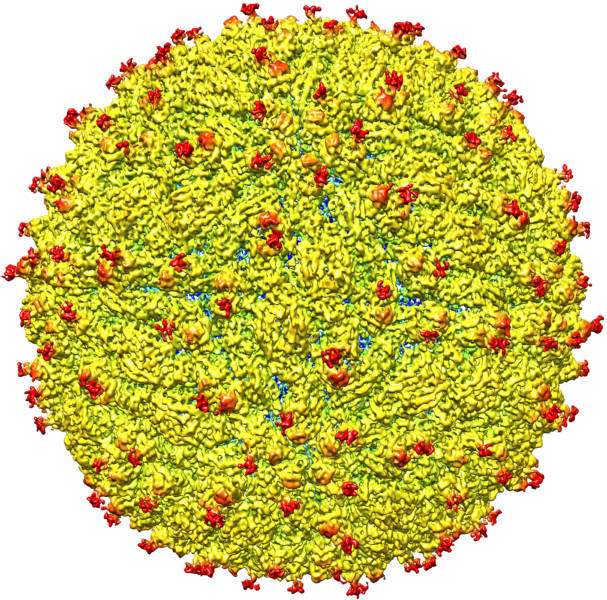Working with discarded tissue, the researchers infected fetal neural stem cells — a building block of the nervous system — with three different strains of the Zika virus. Stem cells infected with the ZIKV strain, which is responsible for causing the current outbreak, died at rates more than four times higher than an uninfected brain.
The specific proteins in question kill neural cells by hijacking a signaling mechanism called AKT-Mtor pathway. The pathway handles the process of breaking down damaged cells, also known as autophagy. As Zika spreads in the developing fetus, the virus actually uses the disposal process to continue proliferating. Cells began dying as early as two weeks after infection occurred.
The Zika virus rose to prominence in 2015 after cases of an unknown disease were reported in Brazil. Since then, the outbreak has affected more than 40 countries, including the United States.
The virus is spread by certain mosquitoes and can cause flu-like symptoms such as fever, muscle aches and joint pain in adults. Pregnant women are considered especially vulnerable because of the risk of microcephaly.
Dr. Kjersti Aagaard, a maternal-fetal medicine specialist at Texas Children’s Hospital Pavilion for Women and the Baylor College of Medicine, said microcephaly triggered by Zika is an urgent concern because of its association with brain malformation. With the virus, Aagaard said, a smaller head likely encases a smaller brain ravaged by disease.
“Microcephaly is the endpoint of the damage,” she said.
Aagaard also noted that the virus can affect pregnant women in other serious ways, too. The illness can lead to miscarriage, stillbirths and low amniotic fluid. In some cases, the illness causes both mother and child to develop ulcers in the eye.
But, some pregnant women who become infected never pass the virus to the fetus at all, Aagaard stressed. Early screening is key in identifying if and when a fetus is affected by the infected mother.
“An infected mom does not equal an infected fetus,” she said. “And an infected fetus does not equal an affected fetus.”
Findings from the latest study have already prompted further research to develop various Zika drugs and vaccines. Scientists are already working on a live, attenuated vaccine that will use a strain of the virus without the microcephaly-causing proteins, Jung said.
But questions remain, such as how these proteins interrupt the cell’s ability to regulate brain development. And while the scientists made this discovery in six months, Jung anticipates the next phase may take several years.
“We know where we are going but we need to find the detailed map,” he said.
Funding is also an issue. Congress left for recess in July without allocating monies for the Zika effort, which means labs that depend on government grants will be strapped for cash in the coming months.
But Dr. Gary Clark, chief of pediatric neurology and developmental neuroscience at Texas Children’s Hospital, said research should not be the medical community’s main priority. Instead, authorities should refocus on educating pregnant women and travelers entering the country from affected areas to prevent the virus’ spread and protect future children from a lifetime of disability.
“I think that bottom line is that this virus causes brain damage,” he said. “And this is permanent.”
This story was produced byKaiser Health News, which publishes California Healthline, a service of the California Health Care Foundation.

